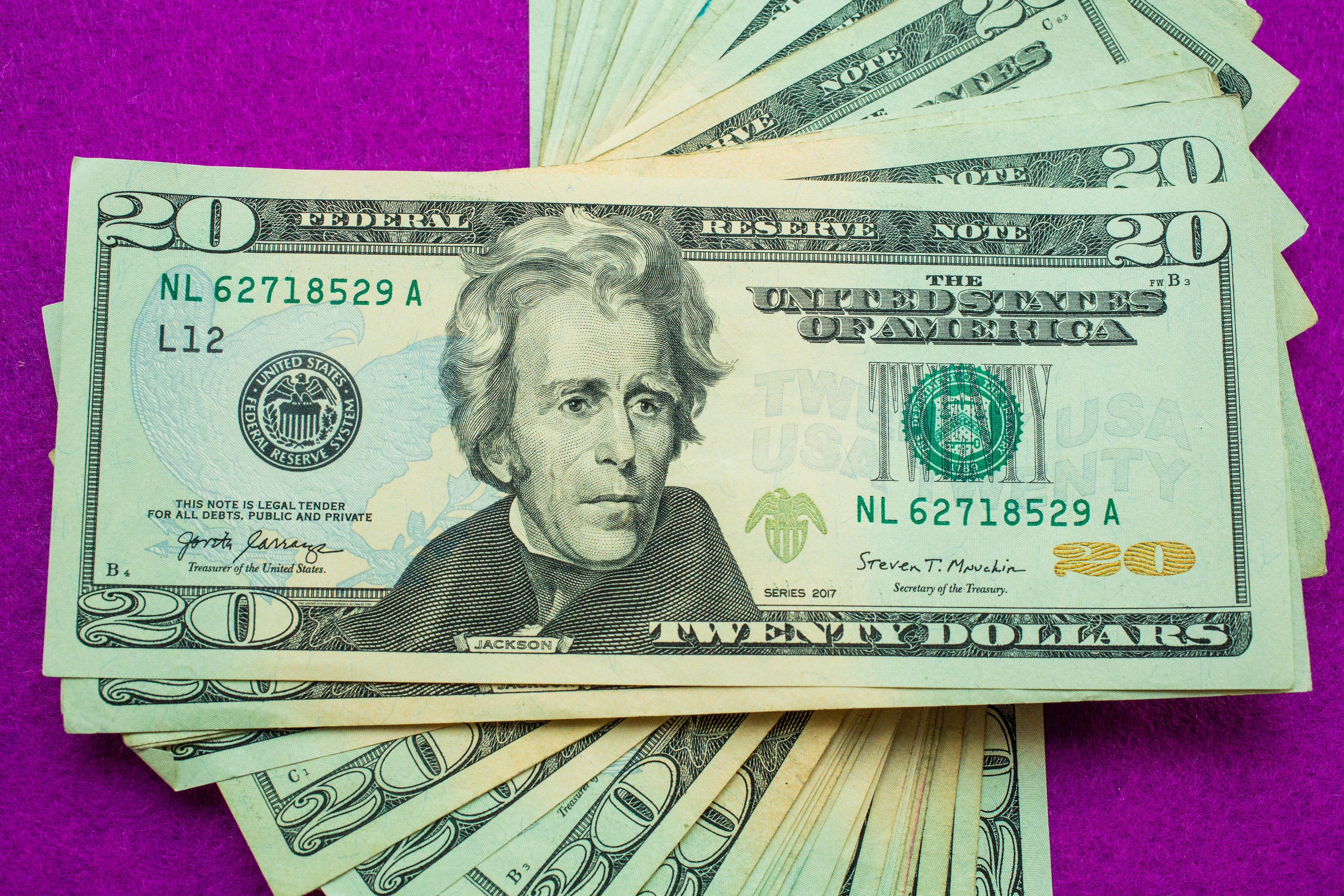
The next child tax credit check will be disbursed on August 13.
Sarah Tew/CNETIf you're still waiting for your child tax credit check it may be time to do a payment trace. But first, you need to make sure your information is up to date. If you changed banks or your 2020 tax return doesn't qualify you for payments, you may need to update your information to get the advance checks. This year's child tax credit changes mean that eligible families can get advance monthly payments between now and December. They'll get the other half of the money when filing taxes next year. Families can get up to $300 for each qualifying dependent each month depending on the child's age and the parent's income.
The first round of child tax credit payments were sent July 15. But the payment rollout hasn't been smooth, and many are still waiting. Many families are banking on the money for food, child care and back-to-school supplies. Child tax credit checks were supposed to be directly deposited into parent's bank accounts if their banking information is on file with the IRS. If not, a check will be mailed. But if you're still waiting for the money, the IRS has an online Update Portal to show you your payment processing date. If you need to make any changes to get the early payments, the portal will let you update your banking information, but you'll have to wait until later this year to make changes to your address, income and number of dependents. The portal doesn't have this functionality quite yet.
How do you file a payment trace? What are the eligibility requirements, and how can parents opt out if they don't qualify? What happens if they don't unenroll? We'll answer these questions and address possible reasons for delays. We'll also show you how to opt out of the advance payments if you would rather get one lump sum of money. We have recently updated this story.
Why are child tax credit checks delayed?
Even though child tax credit payments are scheduled to arrive on certain dates, you may not get the money when expected for a few reasons. The IRS may not have an up-to-date mailing address or banking information to send your check. You may be going to receive a mailed check, or the payment may still be being processed for direct deposit.
It's also important to note that if you're a victim of tax-related identity theft, you won't receive child tax credit payments until the issues have been resolved with the IRS. If the issues aren't resolved this year, while early payments are disbursed, you'll get the full amount when you file your taxes next year. And keep in mind that if you are eligible for child tax credit payments, you should still receive them, even if you have unpaid state or federal debt.
Another possible reason your check may be delayed is because your 2020 return is still in processing. The IRS is currently working through a backlog of last year's returns. If your information has changed or you had a baby, the IRS may not know that they owe you the credit, especially if the tax agency is basing the credit on your 2019 tax return while your latest one is processing.
What should I do if I don't receive a child tax credit check?
If a few days have passed and you haven't received the money you're owed, see if the Processed Payments section of the Update Portal has any information. If the payment was delivered, make sure your address and banking information are correct -- especially if you've moved or changed banks.
The IRS also offers a payment trace as a way to find your funds, including from missing stimulus checks. You can request a trace -- which means filing an inquiry into the location of your IRS money -- by mailing or faxing Form 3911 to the tax agency. Even if the IRS says you're ineligible for early payments, it's best to submit a payment trace in case there's a portal error.
Your payment will be traceable if it has been at least five days since the deposit date and the bank hasn't received the money; or four weeks since the check was mailed; or six weeks if it's mailed to a forwarded address listed by the post office. If the check was mailed to a foreign address you can ask for a payment trace after nine weeks.
When to request a payment trace
| Method of payment | Time passed since IRS sent your payment |
|---|---|
| Direct deposit | 5 days |
| Check mailed to standard address | 4 weeks |
| Check mailed to a forwarded address | 6 weeks |
| Check mailed to a foreign address | 9 weeks |
How can I check my child tax credit payment status online?
Most households that hadn't unenrolled from the advance payment schedule will have seen the July 15 portion of the credit arrive in their bank account via direct deposit. Going forward, you can expect recurring monthly payments to hit your bank account on the 15th of every month (except for August when it's scheduled on the 13th -- see the chart below). According to the IRS, you can use the Child Tax Credit Update Portal to see your processed monthly payment history. It'll be a good way to watch for any payments that haven't hit your bank account yet but should have.
To check on your payments online, you'll need to register with your IRS username and ID.me account information. First-time users will need to have a photo ID (it's one of the ways the IRS is trying to protect your information from identity theft). We don't know yet if the portal will display other payment details, such as banking information, amount, the check's processing date or what could be causing a delay in the payment.
If you're checking your bank account, look for the deposit labeled "CHILDCTC." If your bank has not received the deposit from the IRS, it won't have any processing information for you if you're trying to locate your check.
If you think there's an error, start by using the Update Portal to double-check the bank details the IRS has on file, including your account information and routing numbers.
Child tax credit payment schedule
| Monthly | Maximum payment per child 5 and younger | Maximum payment per child age 6 to 17 |
|---|---|---|
| July 15 | $300 | $250 |
| Aug. 13 | $300 | $250 |
| Sept. 15 | $300 | $250 |
| Oct. 15 | $300 | $250 |
| Nov. 15 | $300 | $250 |
| Dec. 15 | $300 | $250 |
| April 2022: Second half of payment | $1,800 | $1,500 |
How will the IRS send future child tax credit checks?
Eligible parents that have banking information on file from stimulus checks or tax refunds with the IRS should have received money via direct deposit on July 15. If the IRS doesn't have your account information, you can submit it using the Child Tax Credit Update Portal for the August payment, which you have to do before the Aug. 2 opt-out deadline. The IRS recommends using direct deposit to get future payments quicker.
If you didn't add your banking information in time for July's payment, look out for a mailed check to the address that the IRS has on file for you -- just like a mailed tax refund. If you need to update your mailing address for your check, you won't be able to do that through the Update Portal quite yet. The IRS plans to continue expanding the functionality of that portal so you'll be able to update your address, income and number of kids.
A commenter in a recent Reddit thread says they were told the IRS is having a few issues with the child tax credit checks, but is working to resolve them. If you're waiting on your payment and the portal says it's "Pending," keep holding on. A check should be coming your way soon via direct deposit or mail. After a week, you can try to contact the IRS, but there's more you need to know (see below) before you call. You can also do a payment trace. We'll explain below.

Your child tax credit could be delayed because your 2020 tax return is still processing.
Sarah Tew/CNETCan I call the IRS for child tax credit questions?
If you haven't received your child tax credit after a few days, you can try to contact the IRS. (We recommend waiting a few days past the payment date to see if your check will arrive in the mail.) The IRS has limited live assistance due to a tax return backlog, and is also still sending out stimulus checks and unemployment tax refunds. You can find answers to frequently asked questions, check eligibility and see if you have a processed payment on the IRS website. Right now, the IRS doesn't have a phone number for child tax credit questions.
What if I got less money on my child tax credit check than expected?
If you meet all of the child tax credit requirements but track your monthly payments online and find that you're receiving less or more money than expected, there are a few steps you can take. Start by checking your eligibility based on your most recent tax return using the IRS Eligibility Assistant.
Note that the IRS said that it may use your 2019 tax return to determine your eligibility. Once the IRS processes your 2020 tax return, it will automatically adjust your advance monthly payments by increasing or decreasing how much you get.
If you didn't file your taxes, use the Child Tax Credit Non-filer Sign-up Tool to add your information and determine eligibility. It's unclear if the IRS will make up any differences in remaining payments or if the difference will be included in next year's tax refund.
One reason parents may get less money is if they fall out of the income bracket for the maximum amount for monthly payments. Married couples filing jointly earning up to $150,000 and single filers earning up to $75,000 can qualify for the full amount. If you make more, the monthly check is reduced by $50 for every $1,000 over the income bracket. So, if you earn $80,000 as a single filer, you may only be eligible for up to $200 per month -- depending on other eligibility factors.
On the other hand, if you received more money than you're eligible for, you may have to pay the IRS back. That's why it'll be important to use the Child Tax Credit Update Portal to inform the IRS of any changes to your household circumstances so adjustments can be made.
The IRS will send a notice (Letter 6419) closer to tax time next year with the adjusted credit amount based on the advance payments already disbursed to you. Hold on to this letter because you'll need it when you file your 2021 income tax return if you need to return part of your payment.
We'll continue to update this story with new information about tool updates, the child tax credit program and tracking your payments. Take a look at how joint child custody affects the child tax credit as well.
What if I unenrolled from child tax credit payments but still got the monthly credit?
If you or your spouse unenrolled from the child tax credit program but still got the money today, it's possible you didn't opt out in time. You need to do so at least three days before the first Thursday of the month because it takes up to seven calendar days to process the request. The deadline to opt out of July's payment has passed, but you have until Aug. 2 to opt out of future checks.
Note that if you file jointly, each parent needs to unenroll. Otherwise, the spouse who doesn't opt out will receive half of the joint payment.
You can use the Child Tax Credit Update Portal to check your payments online and or to opt out of the program anytime. You'll only need to unenroll once. It's important to note that you cannot re-enroll until late September. Here are the deadlines for unenrolling.
Child tax credit opt-out deadline
| Payment date | Unenrollment deadline |
|---|---|
| July 15 | June 28 |
| Aug. 13 | Aug. 2 |
| Sept. 15 | Aug. 30 |
| Oct. 15 | Oct. 4 |
| Nov. 15 | Nov. 1 |
| Dec. 15 | Nov. 29 |
"payment" - Google News
July 24, 2021 at 02:00AM
https://ift.tt/3Bz2f4q
No sign of your child tax credit payment? Here's how to track your money - CNET
"payment" - Google News
https://ift.tt/3bV4HFe
https://ift.tt/2VYfp89
Bagikan Berita Ini















0 Response to "No sign of your child tax credit payment? Here's how to track your money - CNET"
Post a Comment